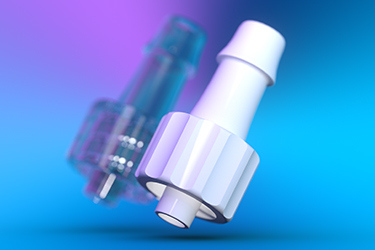Balancing Safety And Sustainability: The Challenges Of Plastic Luer Fittings In The Medical Industry

In recent years, the debate around the usage of single-use plastics has grown. The health sector is no exception. While there is a need for sustainable practices in healthcare, there is also a pressing need to ensure patient safety.
The use of single-use plastic luer fittings in medical settings, medical devices, and patient care is one such example where the sustainability versus safety debate arises. This white paper aims to explore this debate and offer insights into the challenges and opportunities that lie ahead.
What are Luer Fittings?
Luer fittings are standard components widely used in medical devices such as catheters, syringes, and infusion sets. These fittings allow for the secure and leak-proof attachment of medical devices to each other or to a patient’s body. Luer fittings are typically made of plastic, and they come in two interlocking types: male and female. The male luer fitting has a tapered cone-shaped end that fits into the female luer fitting, which has a corresponding tapered coneshaped socket.
The primary function of plastic luer fittings is to facilitate the reliable transfer of fluids, such as medications, solutions, or gases, in medical applications. These fittings are designed to ensure a tight seal and prevent leaks or disconnections during fluid transfer, minimize the risk of contamination, and maintain the integrity and safety of the system.
Get unlimited access to:
Enter your credentials below to log in. Not yet a member of Med Device Online? Subscribe today.
